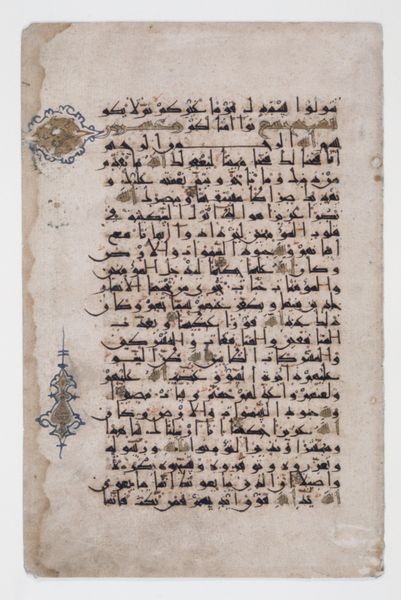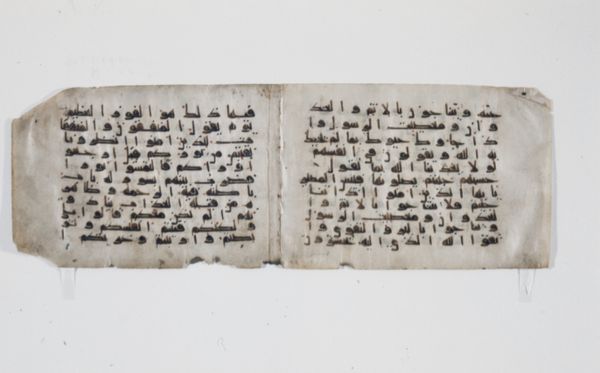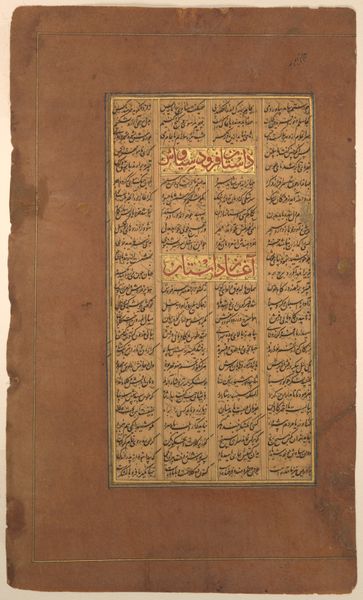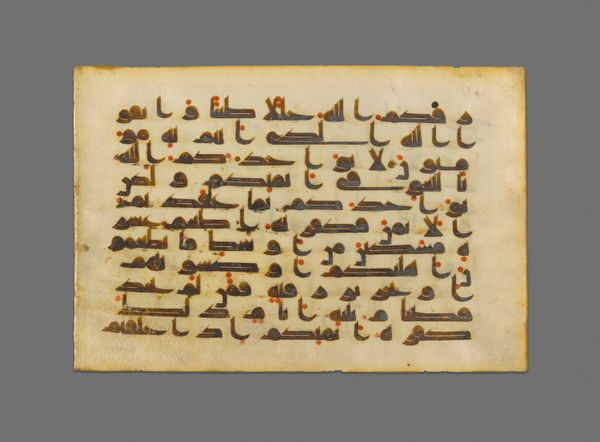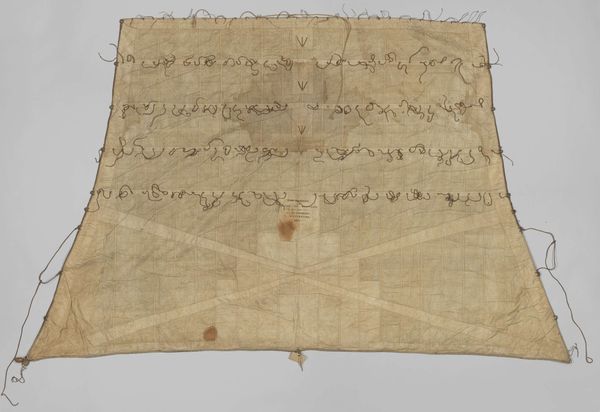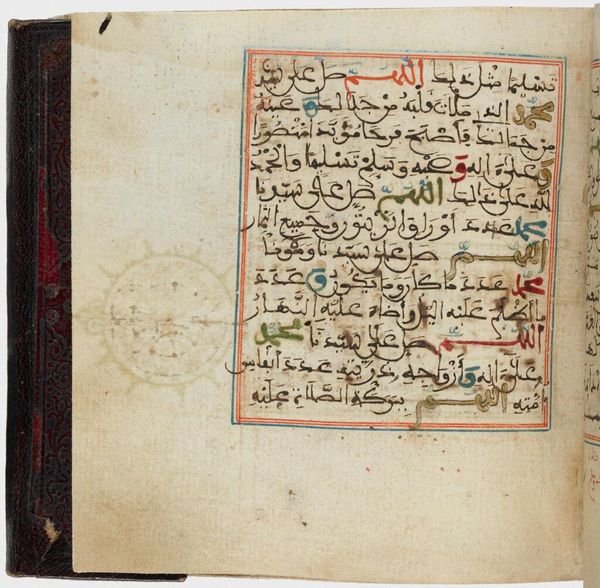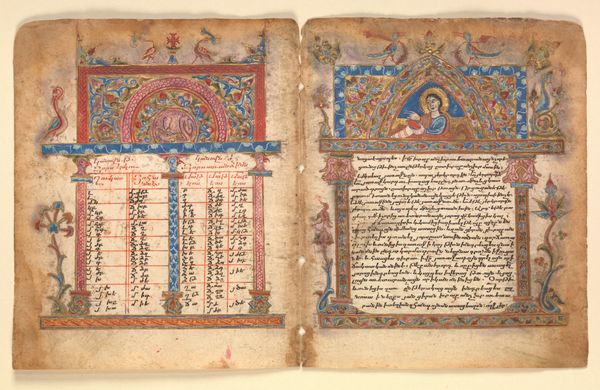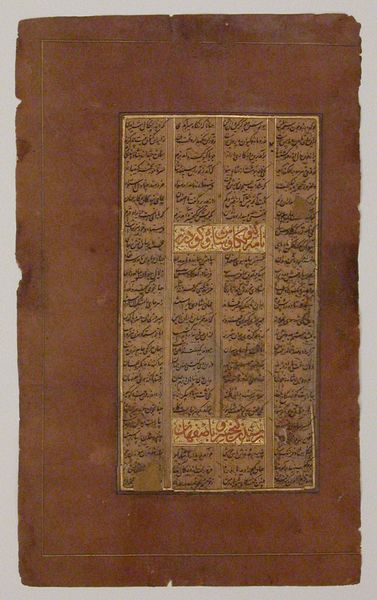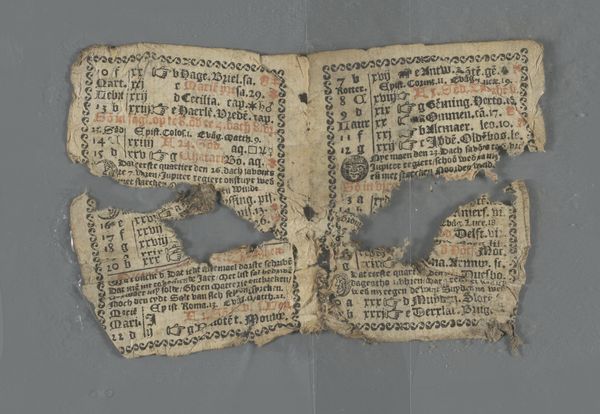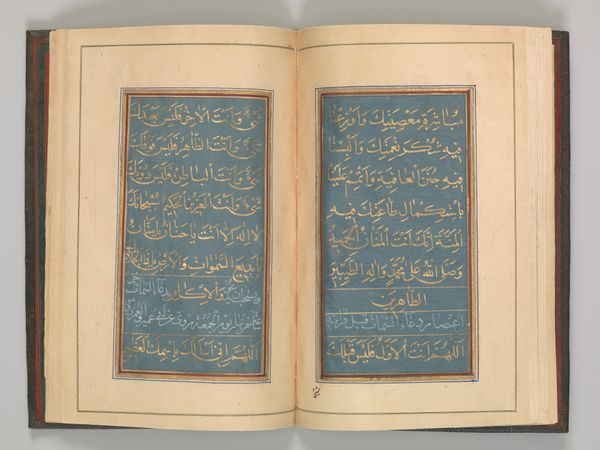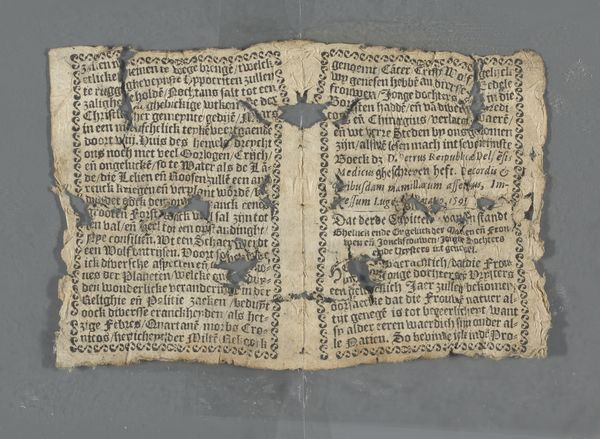
drawing, paper, ink
#
drawing
#
water colours
#
ancient-egyptian-art
#
figuration
#
paper
#
text
#
ink
#
ancient-mediterranean
#
men
#
history-painting
#
miniature
Copyright: Public domain
Curator: This is a section of the "Book of the Dead" commissioned for Henettawy (C), dating back to around 970 BC. It's created using ink, drawing and watercolors on papyrus. Editor: It's surprisingly fragile looking. The aged paper seems incredibly thin and it's interesting how dense the drawing is juxtaposed with the empty areas. Curator: Indeed. These "Books of the Dead," were essentially guidebooks to the afterlife, prepared individually. The availability of such elaborate scrolls speaks volumes about the social stratification of ancient Egypt and access to artisans, specifically those skilled in calligraphy and painting. Consider also, the papyrus, derived from a plant predominantly sourced in Lower Egypt – its very origin ties into power structures. Editor: It shows how important such imagery and funerary practice was that these books, likely very expensive, were considered a must-have, for their journey to the next realm. It illustrates an intersection between political power, religious beliefs, and image-making during that era, especially considering the state involvement and regulations of papyrus production and its effect on the accessibility to literacy for the common person. Curator: The uniformity of the hieroglyphs alongside detailed illustrations suggests highly skilled labor. Each symbol had to be carefully rendered. Notice also the economy of color. Pigments had to be sourced and ground and mixed and so the palette gives some indication as to which colors held both material value but potentially religious too. Editor: Absolutely, it’s amazing that something so delicate could endure so long and convey this insight. Examining “Henettawy's Book of the Dead” really highlights the material labor needed to create it as a commodified sacred object. Curator: Studying this papyrus brings to the forefront our connection between the visual culture, funerary rites, and broader social context. It is a powerful example of the intersection of ritual practice and societal order.
Comments
No comments
Be the first to comment and join the conversation on the ultimate creative platform.
